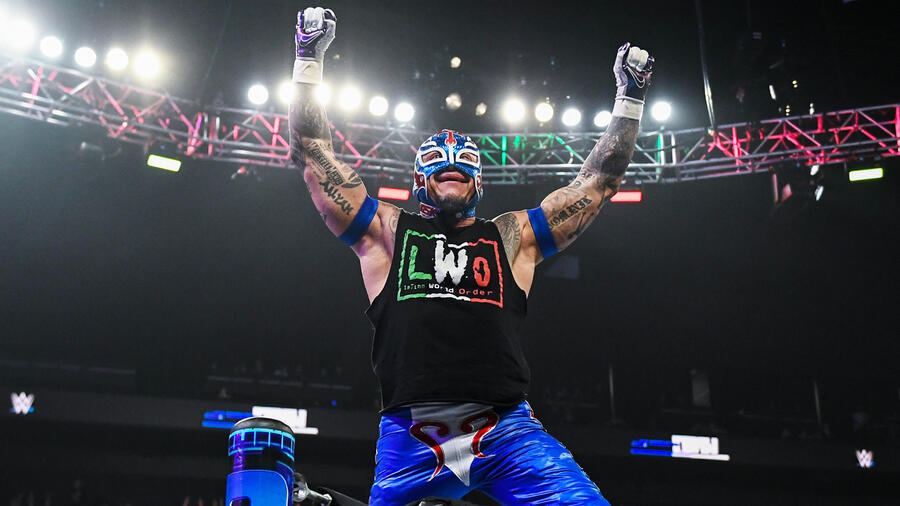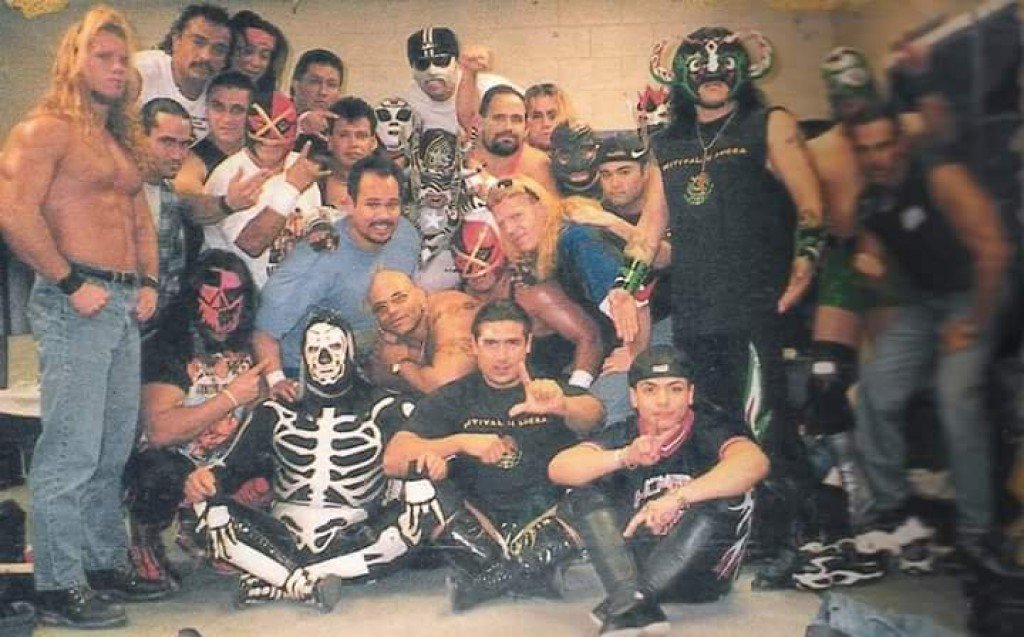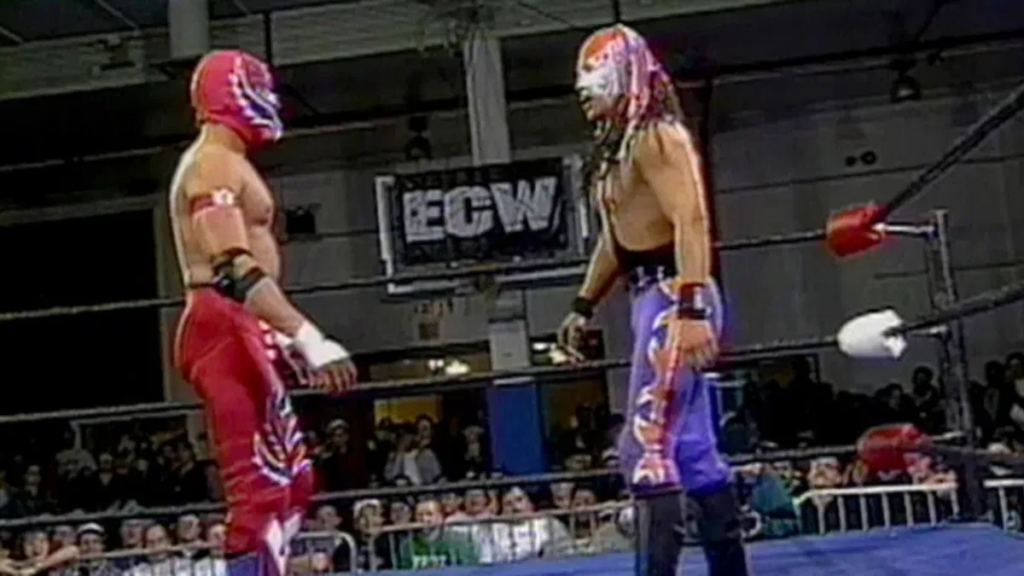The Lucha Libre Influence on Mainstream Wrestling

When it comes to professional wrestling, few styles are as instantly recognizable and influential as lucha libre. The Mexican wrestling tradition, known for its colorful masks, high-flying maneuvers, and rich cultural heritage, has left an indelible mark on the wrestling world. Over the decades, the influence of lucha libre has expanded beyond Mexico, becoming a cornerstone of mainstream wrestling promotions across the globe, including WWE, AEW, and beyond.
The Origins of Lucha Libre
Lucha libre, meaning “free fight” in Spanish, dates back to the early 20th century, with roots deeply entwined in Mexican culture and folklore. The modern era of lucha libre began in the 1930s when Salvador Lutteroth, widely regarded as the father of lucha libre, founded the Empresa Mexicana de Lucha Libre (EMLL), which later became Consejo Mundial de Lucha Libre (CMLL). Lutteroth drew inspiration from American professional wrestling but incorporated elements of Mexican storytelling, mythos, and spectacle to create something entirely unique.
By the mid-20th century, lucha libre became a cultural phenomenon in Mexico. It wasn’t just a sport—it was an art form and a reflection of societal values. Luchadores were seen as larger-than-life heroes or villains, with their masks symbolizing mysticism, identity, and honor. The masks weren’t merely for show; losing one’s mask in a match often signified a dramatic fall from grace, a concept that resonated deeply with fans.
Key Features of Lucha Libre
Lucha libre is defined by its fast-paced, acrobatic style and an emphasis on storytelling through physicality. Some of its most iconic features include:
- Aerial Techniques: High-flying moves, such as the hurricanrana, plancha, and tope suicida, are central to lucha libre. These moves are performed with incredible agility and precision, often defying gravity.
- Masks: The colorful masks are a hallmark of lucha libre. They not only add to the visual appeal but also serve as symbols of the luchador’s persona and legacy. A mask vs. mask (or mask vs. hair) match is one of the highest-stakes bouts in lucha libre, often leading to dramatic storytelling.
- Tag Team Wrestling: Lucha libre popularized multi-man tag team matches, including the trios format (three-on-three), which has become a staple of the genre.
- Rudos vs. Técnicos: The division between rudos (heels) and técnicos (faces) is a cornerstone of lucha libre storytelling. Rudos rely on underhanded tactics, while técnicos embody honor and sportsmanship.
The Expansion of Lucha Libre Beyond Mexico
Lucha libre’s journey to international prominence began in earnest in the latter half of the 20th century. Mexican promotions like CMLL and AAA (Asistencia Asesoría y Administración) thrived domestically, but the growing accessibility of television and cross-border talent exchanges helped bring lucha libre to new audiences.
The Golden Era of Luchadores
During the 1940s and 1950s, stars like El Santo and Blue Demon became cultural icons, not only in wrestling but also in film. El Santo, in particular, transcended the sport, appearing in over 50 movies where he battled everything from criminals to supernatural beings. This blend of wrestling and pop culture elevated lucha libre’s status, making it a significant cultural export.
By the 1970s and 1980s, luchadores began venturing into promotions in the United States and Japan, introducing international audiences to their unique style. Stars like Mil Máscaras, who was known as the “Man of a Thousand Masks,” became pioneers, blending lucha libre with the styles of other wrestling traditions.
Lucha Libre’s Migration to Mainstream Wrestling
The global influence of lucha libre grew exponentially during the 1990s, a pivotal decade for the wrestling industry. The rise of cable television and cross-promotional events introduced lucha libre to new audiences, fundamentally altering the landscape of mainstream wrestling.

WCW and the Cruiserweight Revolution
World Championship Wrestling (WCW) played a crucial role in bringing lucha libre to American audiences during the “Monday Night Wars” era. The promotion’s cruiserweight division showcased an array of international talent, with luchadores like Rey Mysterio Jr., Psicosis, La Parka, and Juventud Guerrera becoming key figures. These wrestlers captivated fans with their innovative, high-risk maneuvers and breathtaking athleticism. Matches in the cruiserweight division frequently stole the show, and luchadores quickly became fan favorites.
The cruiserweight division of WCW wasn’t just a side attraction; it became a cornerstone of the promotion’s programming. The opening matches of WCW’s flagship show, Monday Nitro, often featured cruiserweight bouts that showcased unmatched speed, creativity, and aerial wizardry. Wrestlers like Ultimo Dragon and Eddie Guerrero, while not strictly luchadores, adopted elements of lucha libre to enhance their in-ring styles. The division’s unpredictability and the ability to blend lucha libre with other wrestling styles made it a standout element of WCW’s success.
Rey Mysterio Jr.’s rivalry with Psicosis became legendary, with their matches displaying incredible chemistry and innovation. Their battles in WCW were often considered masterclasses in athleticism and storytelling. Similarly, Juventud Guerrera’s flashy moves and charisma endeared him to fans, while La Parka’s iconic dance moves and hard-hitting style made him a cult favorite. The cruiserweight division didn’t just give luchadores a platform—it also changed the way mainstream audiences viewed wrestling, proving that smaller, more agile wrestlers could deliver just as much (if not more) excitement as the heavyweights.
Another key player in the cruiserweight division was Eddie Guerrero, who brought a unique hybrid of lucha libre and technical wrestling to WCW. Guerrero’s ability to tell a story in the ring while performing jaw-dropping maneuvers highlighted the depth and versatility of lucha libre. His matches against luchadores and non-luchadores alike elevated the division, making it a must-watch segment of WCW programming.
The impact of WCW’s cruiserweight division on lucha libre cannot be overstated. It not only introduced millions of fans to the brilliance of lucha libre but also laid the groundwork for future generations of high-flying wrestlers in promotions worldwide.

ECW and the Arrival of Lucha Libre
Extreme Championship Wrestling (ECW), known for its hardcore and boundary-pushing style, also played a pivotal role in introducing lucha libre to American audiences. Paul Heyman, ECW’s visionary promoter, recognized the unique appeal of lucha libre and brought in luchadores to add diversity and excitement to the promotion’s programming.
Luchadores like Rey Mysterio Jr., Psicosis, and Juventud Guerrera made their ECW debuts in the mid-1990s, delivering matches that left fans in awe. These wrestlers brought a completely different energy to the ECW arena, blending their high-flying maneuvers with the gritty, chaotic environment that ECW was known for. Matches like Rey Mysterio vs. Psicosis in 1995 showcased lucha libre at its finest, with the two athletes putting on a clinic of innovation, athleticism, and storytelling.
What made ECW’s embrace of lucha libre so impactful was its ability to expose a hardcore, underground fanbase to a style they had rarely seen before. The audience, known for its passion and vocal reactions, embraced the luchadores wholeheartedly, recognizing their skill and contributions to the overall product. These performances didn’t just entertain—they educated fans about the rich tradition of lucha libre and its place in the wrestling world.
The influence of lucha libre in ECW extended beyond individual matches. It inspired other wrestlers on the roster to incorporate elements of the style into their own arsenals, leading to a more dynamic and varied product. Additionally, the success of luchadores in ECW helped pave the way for their eventual transition to larger promotions like WCW and WWE, where they would continue to influence the industry on a grander scale.
WWE Embraces Lucha Libre
While WWE was slower to adopt lucha libre compared to WCW, its eventual embrace of the style helped solidify its place in global wrestling culture. Rey Mysterio’s arrival in WWE in 2002 marked a turning point. He quickly became one of the company’s biggest stars, earning multiple championships and achieving mainstream recognition. His victory in the 2006 Royal Rumble and subsequent World Heavyweight Championship win at WrestleMania 22 were landmark moments for lucha libre’s influence in WWE.
In addition to Mysterio, WWE has featured many luchadores over the years, including Sin Cara, Kalisto, Gran Metalik, and Santos Escobar. The company’s partnership with Mexico’s AAA promotion and the launch of the cruiserweight-focused “205 Live” also underscored WWE’s recognition of lucha libre’s appeal.
AEW and the Modern Lucha Libre Influence
All Elite Wrestling has further embraced lucha libre’s influence, often featuring luchadores in prominent roles. Wrestlers like Penta El Zero M, Rey Fénix, Bandido, and others have become integral parts of AEW programming. The Lucha Brothers (Penta and Fénix) have delivered some of the most memorable matches in AEW’s history, blending lucha libre techniques with modern wrestling sensibilities.
AEW’s partnerships with Mexican promotions, such as AAA, have facilitated cross-promotion and allowed lucha libre to thrive on an international stage. Events like “Triplemanía” and AEW’s collaborations with AAA highlight the ongoing exchange between lucha libre and mainstream wrestling. The AEW-AAA crossover has also introduced fans to rising luchadores, ensuring the style’s legacy continues to grow.
Lucha Libre’s Broader Impact
Beyond the ring, lucha libre has influenced wrestling culture and pop culture in numerous ways:
- Masks in Pop Culture: The iconic masks of lucha libre have transcended wrestling, appearing in movies, comic books, video games, and even fashion. Wrestlers like El Santo and Blue Demon are immortalized as cultural icons.
- High-Flying Evolution: Lucha libre’s emphasis on aerial maneuvers has inspired wrestlers across all styles. Wrestlers who don’t identify as luchadores—such as Ricochet, Will Ospreay, and Kenny Omega—incorporate lucha-inspired moves into their arsenals, demonstrating the style’s widespread influence.
- Global Representation: Lucha libre has contributed to the diversification of professional wrestling, showcasing the richness of Mexican culture and providing representation for Latino wrestlers and fans.
Honoring the Legacy
While lucha libre has become a global phenomenon, its roots remain deeply tied to Mexican culture and tradition. Promotions like AAA and CMLL continue to honor the legacy of lucha libre, producing new generations of luchadores who carry on the tradition. Events like “Dia de Muertos” (Day of the Dead) wrestling shows highlight the cultural significance of lucha libre, blending spectacle with heritage.
For mainstream wrestling, lucha libre represents more than just a style—it’s a reminder of wrestling’s diversity and capacity for innovation. From the local arenas of Mexico to the grand stages of WrestleMania and AEW Dynamite, lucha libre’s influence is undeniable and enduring. As wrestling continues to evolve, the spirit of lucha libre will undoubtedly remain at its heart, inspiring fans and wrestlers alike for generations to come.

News Writer. Living in Tasmania Dave is a lifelong wrestling fan, formerly working for Mix It Up Radio’s Wrestling Asylum Radio program, and Wide Bay Pro Wrestling working backstage and writing articles. Podcaster with 15 years of journalism experience across different sports mostly AFL and professional wrestling, photographer for local footy in Tasmania.







